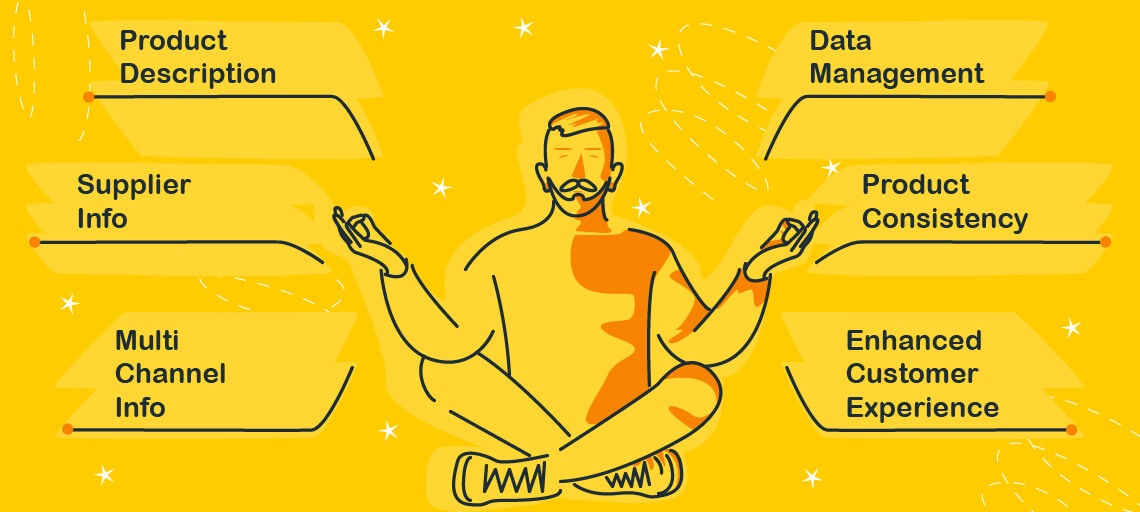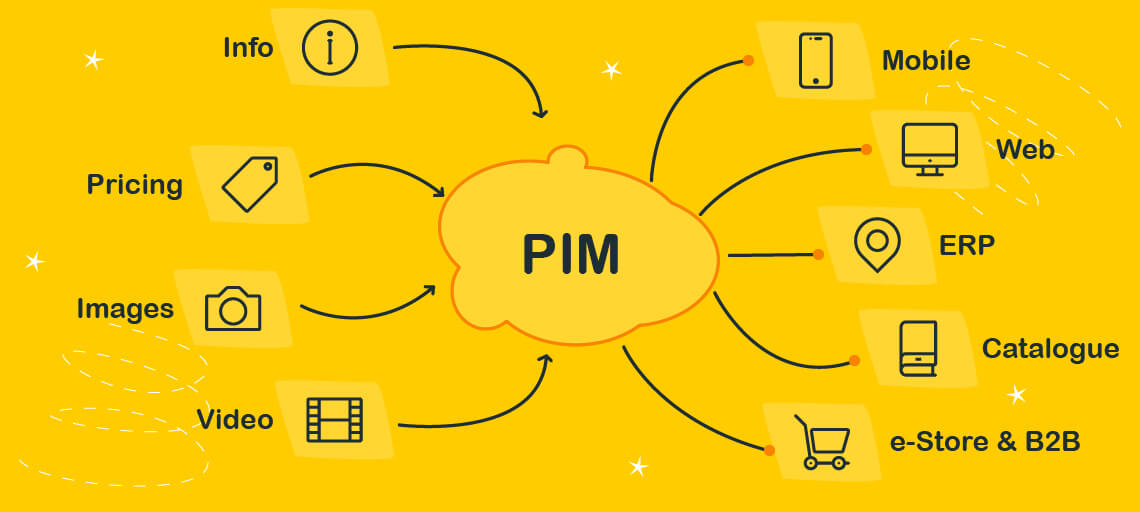
PIM (Product Information Management) is an eCommerce solution that collects, manages, enriches, and distributes your product data. Here's how to integrate it to your business.
One of the most frustrating things to struggle through when you have a business is ensuring that the major data-related issues don’t keep you from actually running your business. When information is inaccurate or flat-out wrong, this creates a negative customer experience. When the customer isn’t happy, they tell everyone they know about the poor experience.
Connect multiple marketplaces to reach out to more customers.
Check the full list of features provided by Sellbery
So, how do we fix this issue? Find a PIM. A PIM can make the administration side of the business so much easier because of its fantastic features.
Wait, What is PIM?
Depending on your background, hearing the name PIM might bring Otto Frank into mind, nicknamed “Pim” in “The Diary of Anne Frank.” This has nothing to do with that Pim.
PIM stands for “Product Information Management” and is a software solution for eCommerce businesses. It acts as a single source to collect, manage, enrich, and distribute product data to a variety of sales channels. It creates centralized and structured product data in one database. This is where employees, partners, and other data owners can gain access to that.
What PIM Is Not
Acronyms are everywhere in the business and tech worlds. Because of this, it is important to make some distinctions. Those are below:
- PXM: Product Experience Management focuses on the end-user and makes sure the experience is high quality.
- PDM: Product Data Management is primarily for internal data exchange processes. Those that use this solution are engineers, designers, or the like.
- PCM: Product Content Management is close to the PIM system, but the PCM does not support the data aggregation from multiple channels. All the information has to be manually imported, which is highly time-consuming.
- MDM: Master Data Management combines all aspects of a business to make it a complex organizational solution.
That said, some solutions go beyond standard PIM functionality. For example, the open-source system AtroPIM is a part of a broader master data management (MDM) platform called AtroCore. This setup combines product information management with MDM and data integration features. It’s designed for businesses that need more flexibility and can handle multiple types of data. Most PIM solutions, however, are more narrowly focused.
The major challenge for brands operating globally is to fit the product information to each retailer in each market. For each market, there are specific demands for retailers to be able to sell products in several different geographical locations. Thus, PIM data must be managed in multiple languages and formats to accommodate different parts of the world where English might not be someone’s first language. This is accomplished through a central database that’s able to confront this issue.
It also is not an ERP (Enterprise Resource Planning), which deceives many into thinking they have a PIM. An ERP, however, does not handle the complexity of the large catalogs with multiple vendors providing multiple products.
Should You Get PIM?
In short the answer is – yes. Unless you thought we were talking about a perm, in which case, the answer is a definite no.
Back to the main question of whether or not you should get a PIM. In practicality, it depends upon what the company requires. It depends on the volume of SKUs (Stock Keeping Units) and product suppliers you are currently managing and planning to manage. Some other common reasons to see if you need a PIM is:
- If you have a great number of SKUs (Stock Keeping Units) that are greater than time put into manual administration,
- More than one sales channel,
- Your information needs to be shared internally,
- More than a few product suppliers that need product data to be shared,
- Or you often add or remove product lines.
A PIM ensures that product information is correct and consistent, so the customer can get an excellent buying experience. It also provides a database that is accessible to those within the organization. Not only does it make it more effective for the entire organization, but it also allows employees to focus on the end-user and their experience.
Any solution that solves the issues of selling online, which is almost everything now, is something that definitely should be integrated into the business. In fact, it has been noted that businesses who don’t use PIM come onto the field at a disadvantage because of simply not having the benefits of a PIM.
If a customer comes to the website and searches for something specific, a PIM is the difference between that item that you do have found by the customer, versus not being found because everything is not synched into the same database.
Integrating PIM into your Business

Integrating PIM into your business provides you the ability to integrate your product information management system with other business systems and applications like WooCommerce or Shopify. This improves the management and consistency of the product catalog of information.
If you’re dealing with a complex admin process with your business system, it can lead to errors that can harm your important data regarding your system’s products. Synchronizing your product information between multiple systems and applications reduces repetitive data entry tasks and improves the structure of product information data.
Prices for a PIM can vary and oftentimes you can find different companies with sales on their PIM solution. It indeed is an effective way to streamline your business and make sure your customer is pleased with their product. Any customer that is pleased is a mission accomplished for a business.
Pick any plan for free!
Don’t get caught in the dust.
All seller plans are FREE till October 1, 2021!
Start selling on more marketplaces like Amazon, eBay & Etsy without paying a penny!
Still Not Convinced?
It is hard to adjust your focus when running a business to something that you believe you don’t need because you’re comfortable where you are at. Comfort, however, is the enemy of progress. By plugging a PIM into a content management system (CMS), a site’s search engine, and commerce modules, makes these business tools work more efficiently.
With the obvious growth of competition in business-to-business (B2B), and business-to-consumer (B2C) for that matter, eCommerce means that you have to build up your business strategy with a PIM at its center. It will generate success by creating a centralized database so customers can easily find the product they’re after.
Was this news helpful?







 Yes, great stuff!
Yes, great stuff! I’m not sure
I’m not sure No, doesn’t relate
No, doesn’t relate



